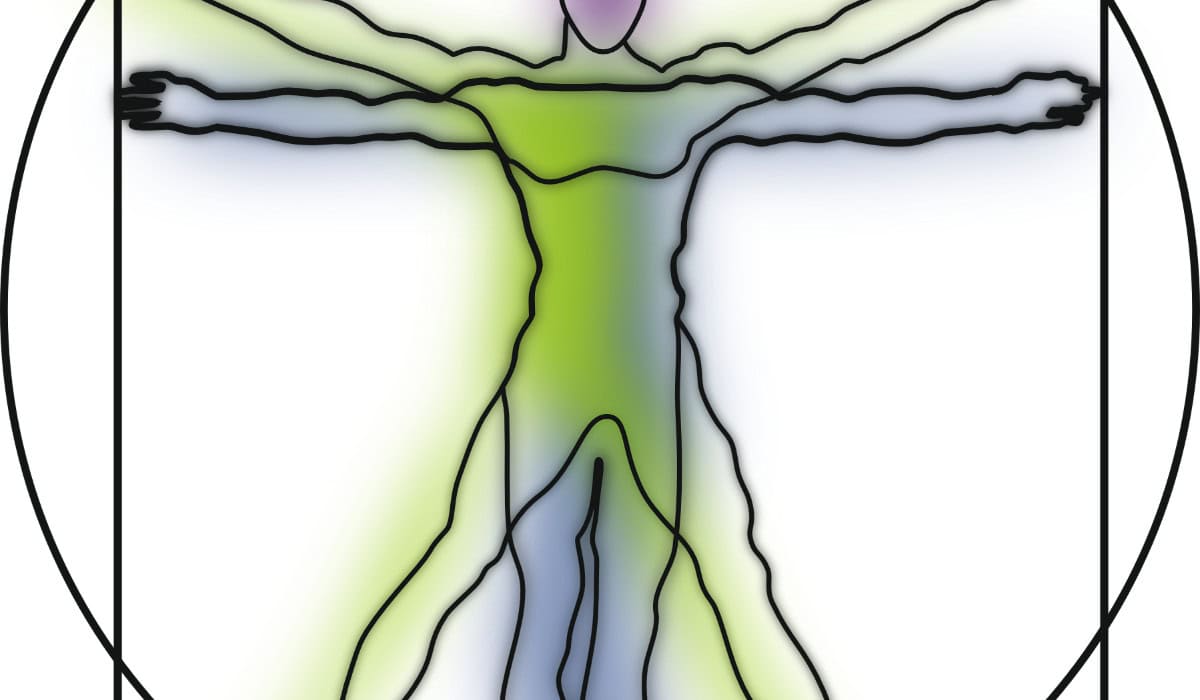The Male Gland
The prostate, a pivotal gland in the male reproductive system, boasts a unique arrangement of functional and structural components critical for its operation. Encapsulated by a layer of fibromuscular tissue, it is anatomically distinguished by its lateral lobes, which are positioned on either side of the portion of the urethra that runs through it. This organ is intimately associated with seminal vesicles, which contribute fluid to the semen, and the seminal colliculus, a feature on the interior that plays a role in ejaculatory processes.
At the core of its function, the prostate produces a fluid that is rich in citric acid, an essential nutrient for sperm health, highlighting the gland’s role in fertility. The presence of the posterior lobe, clinically relevant for its association with prostate health issues, alongside the anterior fibromuscular stroma, underscores the prostate’s complex anatomy. Additionally, structures like the deep dorsal vein of the penis and the prostatic venous plexus are crucial for venous drainage, while the prostatic utricle and internal urethral sphincter are vital for urinary control and reproductive functions. The apex of the prostate, where it meets the urogenital sinus, marks a critical juncture in the male reproductive and urinary systems.
Beginning with the Basics
The prostate is a gland nestled beneath the bladder, playing an indispensable role in both the urinary and reproductive systems. Its main job is to produce a significant portion of the seminal fluid that, combined with sperm from the testicles and fluids from other glands, makes up semen. This fluid not only nourishes the sperm but also provides a medium through which sperm can travel. Understanding the basic anatomy and function of the prostate sets the stage for deeper exploration into its various roles and the common health issues that can affect it.
Anatomy of the Prostate
The prostate is a gland that encompasses the urethra just below the bladder. Its strategic location and the fluid it produces are crucial for sperm viability and ejaculation. Recognizing the prostate as a gland underscores its role in secretion and its importance in male fertility and overall health.
Zone-Specific Anatomy: Transition, Central, and Peripheral Zones
The prostate is divided into several zones, each with distinct characteristics and functions. The transition zone, surrounding the urethra, is where benign prostatic hyperplasia commonly occurs. The central zone, encasing the ejaculatory ducts, plays a pivotal role in reproductive function. Lastly, the peripheral zone is the most significant in volume and the most common site for prostate cancer development. Understanding these zones is crucial for diagnosing and treating prostate-related conditions effectively.
Prostate Functions and Its Role in the Male Reproductive System
The prostate plays a crucial role in the male reproductive system, primarily responsible for producing seminal fluid, a key component of semen. This fluid helps to nourish and transport sperm during ejaculation. The prostate’s muscle fibers also assist by propelling the seminal fluid into the urethra during ejaculation, acting as a powerful pump. Moreover, the alkaline nature of the seminal fluid helps to neutralize the acidity of the vaginal tract, enhancing the survival rate of sperm and increasing the chances of successful fertilization.
Delving Deeper: The Structure and Its Neighbors
Understanding the prostate requires a look at its structure and how it fits within the male pelvic region. The prostate is divided into zones of the prostate, each with distinct functions and susceptibilities to conditions, such as prostate carcinoma. It is enveloped by the urogenital diaphragm and supported by striated muscle, facilitating its role in ejaculatory control. This close relationship with surrounding structures underscores the importance of the prostate in both reproductive and urinary functions.
Microscopic Anatomy: A Closer Look
The prostate consists of a complex arrangement of glands and ducts, surrounded by a dense fibromuscular stroma. This microscopic anatomy is key to its function, producing seminal fluid that contributes to semen. The unique arrangement of glandular cells and muscle fibers allows the prostate to contract during ejaculation, helping to expel seminal fluid into the urethra. This intricate design underscores the prostate’s essential role in male fertility and reproductive health.
Location and Relationship to Adjacent Structures
The prostate lies at the base of the male pelvis, snugly fitting below the bladder and in front of the rectum. Its position allows the seminal fluid to mix with sperm from the testes and fluid from the seminal vesicles, creating semen. The prostate’s location, just above the urogenital diaphragm, plays a pivotal role in urinary control, impacting both reproductive and urinary health. Understanding this spatial relationship helps in diagnosing and treating prostate-related conditions.
Nourishing the Prostate: Vascular and Neural Support
As a gland, the prostate requires a robust blood and nerve supply to function correctly. Its vascular and neural support systems ensure it can produce seminal fluid, contract during ejaculation, and maintain urinary control. This intricate network of arteries, veins, and nerves highlights the prostate’s dynamic role within the male body, influencing both reproductive and general health.
Arterial Supply and Venous Drainage
The prostate’s blood supply is rich and varied, with the internal pudendal artery among the key contributors. This ensures a steady flow of oxygen and nutrients, essential for the health of prostate cells. Surrounding the gland, the prostatic fascia contains a network of veins that facilitate venous drainage of the prostate, removing waste and deoxygenated blood. This vascular arrangement is crucial for maintaining the gland’s health and its ability to produce seminal fluid.
Neural Innervation: The Prostate’s Connection to the Nervous System
The prostate’s function is closely linked to its neural innervation, connecting it with the nervous system. This connection controls the gland’s growth, fluid production, and contraction during ejaculation. The intricate neural pathways underscore the prostate’s responsiveness to both internal hormonal changes and external stimuli, playing a vital role in male reproductive health.
Lymphatic Anatomy and Prostate Health
The lymphatic system plays a role in the prostate’s health and its ability to fight infections and diseases. Lymphatic vessels from the prostate tissue drain into nearby lymph nodes, providing a pathway for immune cells to monitor and respond to potential threats. This system is also a route through which prostate cancer can spread, making it crucial in the context of prostate health and disease management.
Lymphatic Drainage: Pathways for Immune Response and Metastasis
Lymphatic drainage from the prostate is directed towards the lymph nodes around the bladder and rectum, offering a first line of defense against infection and disease. The prostatic capsule and the anterior lobe are especially significant in this lymphatic network, acting as conduits for immune surveillance and response. This drainage system is vital for maintaining prostate health and understanding the spread of diseases, such as cancer, within the body.
The Prostate Through the Lens: Diagnostic Insights
Advancements in medical imaging have significantly improved our understanding of prostate health and disease. These diagnostic tools allow for a non-invasive glimpse into the prostate’s structure and function, aiding in the early detection and treatment of conditions affecting the gland. This perspective is invaluable for both patients and healthcare providers, guiding decision-making and treatment planning.
Diagnostic Tests for Prostatic Diseases
Diagnostic tests for prostatic diseases include a range of procedures from simple blood tests to more sophisticated imaging techniques. These tests help in identifying conditions such as benign prostatic hyperplasia, prostate cancer, and prostatitis, facilitating early intervention and better outcomes for patients.
The Role of Radiological Imaging in Prostate Health
Radiological imaging techniques, such as MRI and CT scans, provide detailed images of prostate tissue, offering insights into its structure and any abnormalities present. This capability is crucial for diagnosing prostate cancer, guiding biopsy procedures, and planning treatment. Imaging plays a pivotal role in managing prostate health, contributing to improved patient care and outcomes.
Common Diseases Affecting the Prostate
Several conditions can impact the prostate, ranging from benign enlargement to cancer. Chronic bacterial prostatitis, for example, is a condition that causes prolonged infection and inflammation of the gland, affecting a man’s quality of life. Understanding these common diseases is essential for early detection, treatment, and managing potential complications.
Benign Prostatic Hyperplasia: Understanding Enlargement
Benign prostatic hyperplasia (BPH) is a condition characterized by the enlargement of prostate tissue, leading to compression of the urethra and urinary symptoms. The growth of prostate cells is a natural part of aging, but when excessive, it can cause significant discomfort and complications. Effective management of BPH focuses on relieving symptoms and preventing progression.
Prostate Cancer: Risk Factors, Symptoms, and Treatment
Prostate cancer is a significant concern, with risk factors including age, family history, and lifestyle choices. It often presents with urinary tract symptoms, such as difficulty urinating, and can lead to erectile dysfunction. Treatment options vary, ranging from active surveillance for low-risk cases to surgery and radiation for more advanced stages. Early detection through screening is critical for successful treatment and outcomes.
Infectious and Inflammatory Conditions
Infections like chronic bacterial prostatitis pose significant challenges to prostate health, often requiring active surveillance to manage symptoms effectively. This condition, along with others, can lead to discomfort and complications if not properly addressed. The prostate and bladder work closely within the pelvic floor, making the health of these areas crucial for overall well-being. Ensuring the prostate cells are free from infection is essential in maintaining this delicate balance and preventing further inflammatory conditions.
Therapeutic and Research Perspectives
Advancements in therapeutic strategies and research are vital in combating prostate-related diseases. With ongoing studies focusing on better understanding the gland’s complexities, there is a hopeful outlook for more effective treatments. Innovations in medical technology and pharmacology are paving the way for new approaches that could significantly improve quality of life for those affected by prostate conditions.
Prostate Immunology: Challenges and Innovations
The study of prostate immunology presents a unique set of challenges and innovations. As researchers delve into the immune response of the prostate, they uncover new pathways for potential therapeutic interventions. This rapidly evolving field holds the promise of developing targeted treatments that could enhance the body’s natural defense mechanisms against prostate diseases, marking a significant step forward in urological health research.
Androgens and Their Impact on Benign Prostatic Hyperplasia
Androgens play a critical role in the development of benign prostatic hyperplasia (BPH), especially in elderly men. These hormones, particularly when they act on the transition zones and neurovascular bundle, can lead to enlargement of the prostate. Monitoring serum PSA levels is an essential part of managing BPH, helping to track the progression of the condition and the effectiveness of treatments aimed at reducing androgen levels.
Text and One-time Access to Specialized Information
In an era where information is key to understanding health, having access to specialized texts can significantly enhance one’s knowledge. Whether it’s for academic purposes, professional development, or personal education, securing text access provides a gateway to a deeper understanding of complex topics, including prostate health.
Securing Text Access for In-depth Study
Securing text access for in-depth study allows individuals to dive deeper into specific areas of interest or concern. This can be particularly useful for healthcare professionals, researchers, and students who seek to expand their knowledge beyond surface-level information, providing them with the tools necessary to explore advanced concepts and latest findings in their field.
Purchase One-time Access for Exclusive Content
Purchasing one-time access to exclusive content can open doors to cutting-edge research and specialized knowledge not readily available through free sources. This investment in one’s education or professional practice can lead to better understanding, innovative solutions, and advancements in fields such as prostate health, significantly benefiting those seeking the most current and comprehensive information.
Conclusion: A Comprehensive Look at Prostate Health
Understanding prostate health is crucial for men, especially as they age. With the prostate divided into several zones, each with its specific functions and potential issues, awareness and early detection are key to managing and preventing diseases. In the United States, efforts to promote prostate health awareness have led to better outcomes for many men, emphasizing the importance of regular check-ups and proactive health management.
Emphasizing the Importance of Awareness and Early Detection
The early detection of prostate tumors can significantly impact the management and outcome of prostate cancer progression. Techniques such as prostate biopsy, monitoring of serum markers, and imaging are crucial in identifying prostatic intraepithelial neoplasia and early stages of invasion in prostate cancer. Awareness campaigns stress the importance of regular screenings to catch potentially metastatic prostate cancer early, when treatment can be most effective, highlighting the critical role of understanding the interplay between urine and semen production, the lobes of the prostate, and the prostatic epithelium in overall prostate health.



